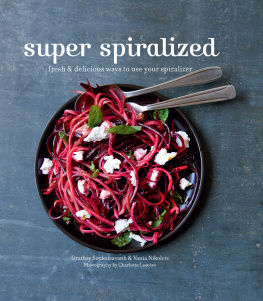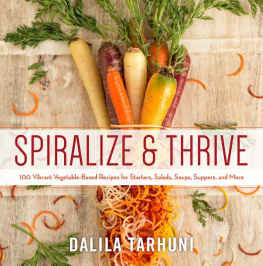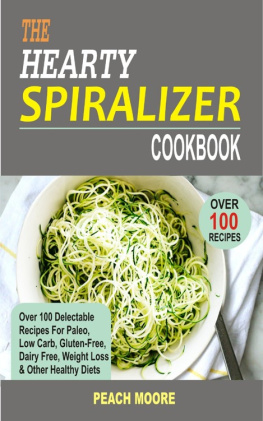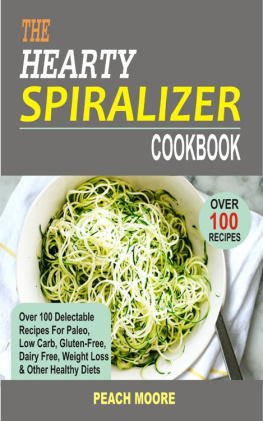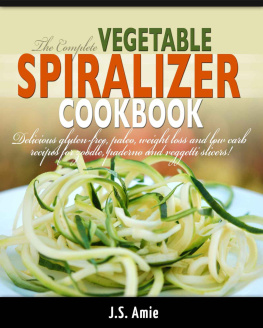contents

Here are a few very useful pieces of equipment for shaping your favourite raw vegetables. These easy-to-use implements will enable you to quickly turn all sorts of vegetables into juliennes, spaghetti, tagliatelle and thin strips. Create spectacular dishes and culinary displays worthy of a chef!
1 MANDOLINE
Perfect for cutting raw or cooked vegetables into slices or strips.
2 MULTIFUNCTIONAL JULIENNE PEELER
A multifunctional peeler with three interchangeable blades that will enable you to create vegetable strips, juliennes, spaghetti or tagliatelle.
3 VEGETABLE PEELER
Very easy to use, small and handy, it serves not only for peeling vegetables but also for cutting them into strips or even slices. Perfect for slicing courgettes (zucchini), carrots, cucumbers and daikon.
4 SPIRALIZER
This little pencil-sharpener-like implement can turn vegetables into long pieces of spaghetti a revolutionary utensil!
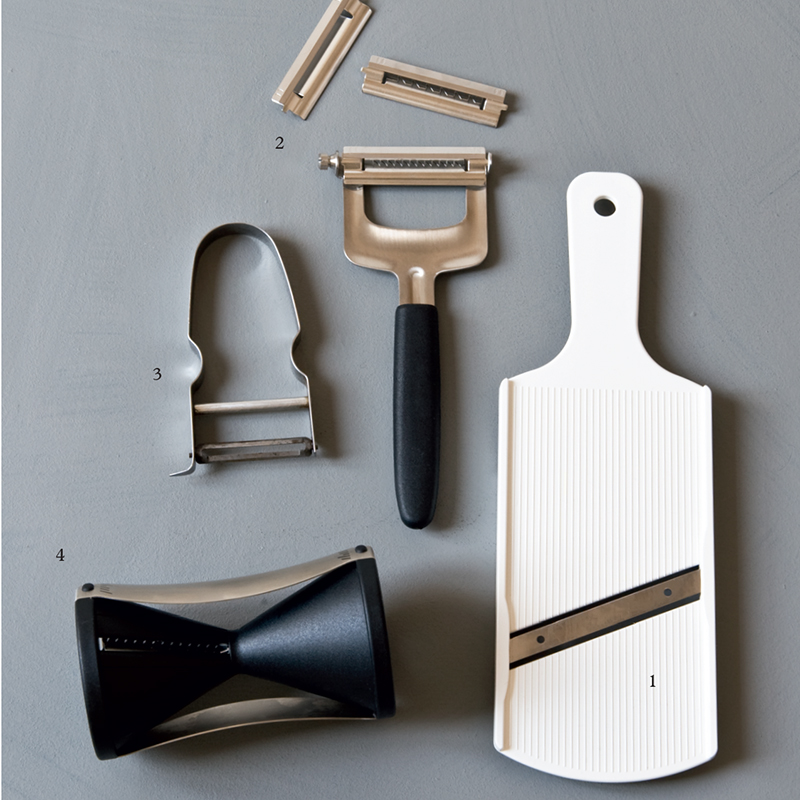
With its three blades, this peeler is very easy to use and versatile.
THE STRAIGHT BLADE (1)
For creating strips and slices. In a few minutes, courgette (zucchini) ribbons can be ready to grill (broil) in the oven!
FINE JULIENNE BLADE (2)
For creating fine juliennes and vegetable spaghetti. Ideal for recipes that require thin strands of vegetables to use in parcels or salads, for example.
WIDE ULIENNE BLADE (3)
For making vegetable tagliatelle or thicker juliennes. Use this blade for fragile fruit or vegetables, such as avocado or mango.
A julienne peeler is perfect for courgettes, carrots and large radishes, such as daikon, but also for beetroot (beets) (choose long ones for a more spectacular result), squash, avocados and mangoes.
If the vegetable is very long, use the peeler lengthways to obtain good long ribbons or juliennes. If the vegetable is rounder in shape (e.g. potato, beetroot/beet, mango), work around it with the peeler in one steady movement to get the strips as long as possible.
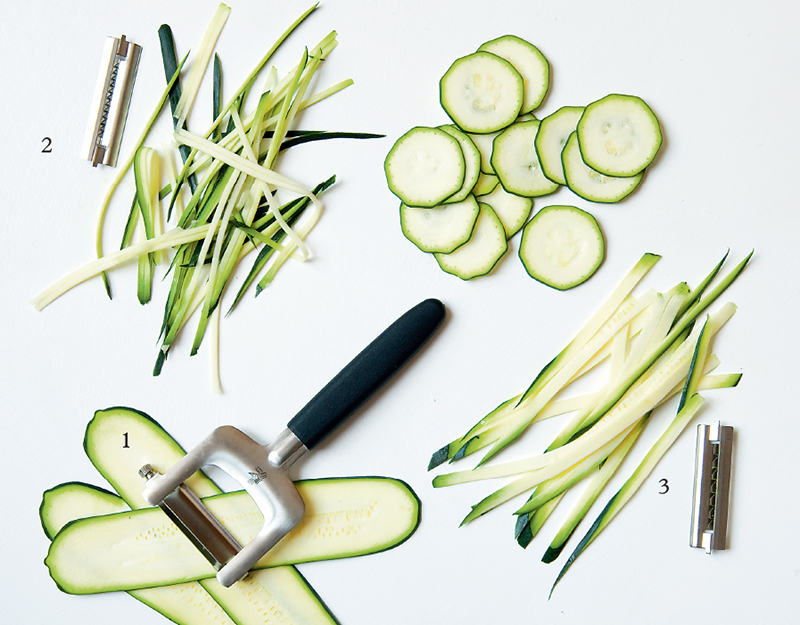
The mandoline is used to cut raw vegetables into thin slices and works best whenthe vegetables are very firm. The forms you obtain will vary depending on the typeof vegetable and the direction in which you slice it: long, rounded vegetables willyield strips or round slices; those comprising layers of leaves, such as leeks, cabbagesand endives, will fall into thin strips.
Although the mandoline is easy to use, its a good idea to hold the vegetables withthe palm of your hand flat to avoid cutting yourself.
DIFFERENT TYPES OF MANDOLINE
The simplest version has a single blade. Very easy to handle, it is perfect foroccasional use.
There are also more sophisticated mandolines generally larger and a bit more expensive that enable you to cut very fine slices and to precisely adjust the thickness ofthe slices.
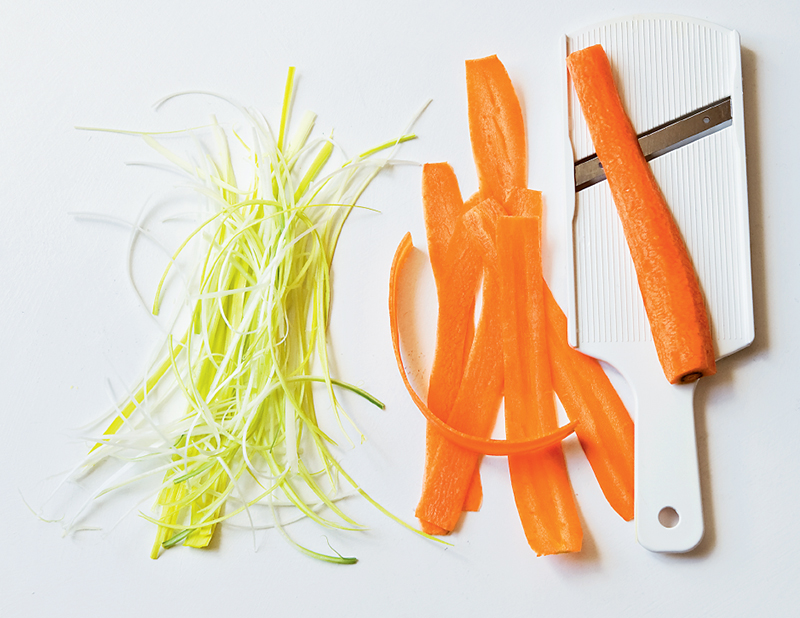
This is the utensil that is revolutionalising vegetable cutting. Really simple andvery original, its used like a pencil sharpener. The simple handheld one shownbelow has a fine julienne fitting at one end to create spaghetti and a wider juliennefitting for creating ribbons at the other.
There are also more heavy-duty stand versions available. While they take up morespace and cost more, this sort of spiralizer is worth the investment if you planto use it on a regular basis as its quick and easy to use and likely to have severaldifferent attachments.
For optimum results, its best to use vegetables that are not too thick and aboveall that are relatively long. If they are
too fat, they wont fit in the spiralizer; too short and they wont give you enoughgrip to turn them and they will yield only very short lengths of spaghetti. Courgettes(zucchini), carrots and sweet potatoes work perfectly.
To obtain long lengths of spaghetti, turn the vegetable (or the handle of the spiralizeron a stand model) smoothly, without jolting. The spaghetti will be endless! Perfectfor creating all sorts of nests, impressive salads and alternative chips.
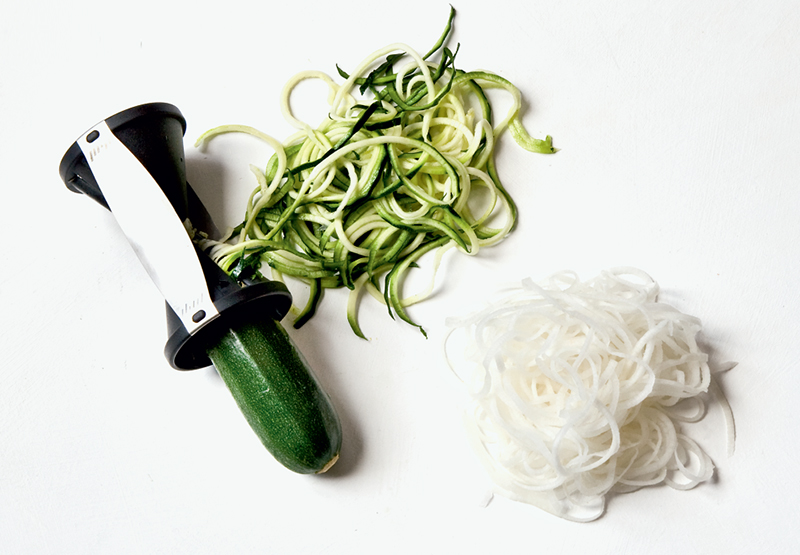
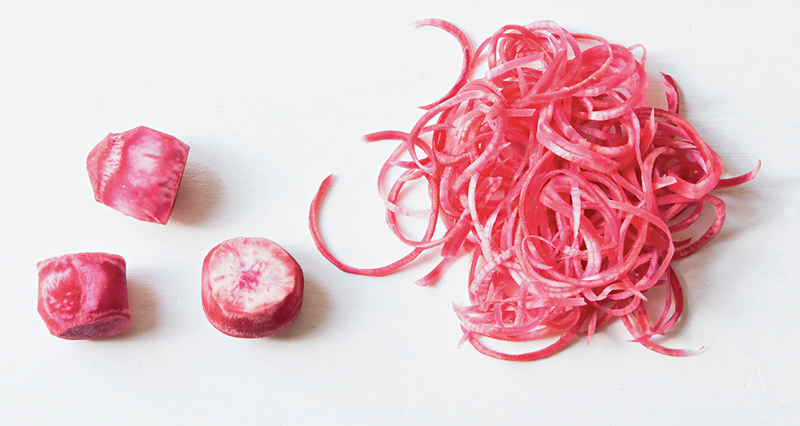
SPIRALIZED VEGETABLE SOUP
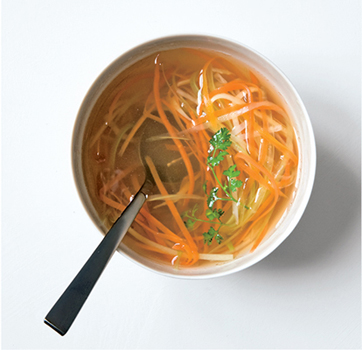
SERVES 4
PREPARATION: 10 MINUTES
COOKING TIME: 20 MINUTES
1 chicken stock (broth) cube, 1 parsnip, 1 fat carrot, 1 fairly long potato, 1 leek(white part only), 3 celery sticks, 2 tablespoons olive oil pepper chopped chervil
Dissolve the stock cube in 1 litre (34 fl oz) boiling water.
Peel the parsnip, carrot and potato. Cut the leek in half then use the mandolineto cut it into juliennes. Slice all the other vegetables using a julienne peeler.
Sweat all the vegetables in the oil over a low heat for 5 minutes. Add the hot stock and cook for a further 1015 minutes.
Season with pepper and adjust the seasoning to taste Serve hot, sprinkled withsome chopped chervil.
TZATZIKI-STYLE CUCUMBER SPAGHETTI
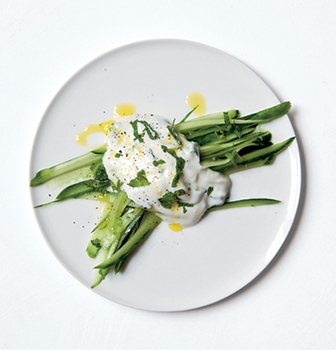
SERVES 2 OR 3
PREPARATION: 5 MINUTES
1 cucumber, bunch of mint, 1 small garlic clove, 250 g (9 oz) Greek-style yoghurt,1 tablespoon white wine vinegar, 2 tablespoons olive oil, salt and pepper
Slice the cucumber using a julienne peeler.
Finely chop the mint and garlic and stir into the yoghurt. Season with the vinegaroil salt and pepper.
Place the cucumber spaghetti on the plates and pour over the minty yoghurt dressing.
COURGETTE TAGLIATELLE WITH PESTO
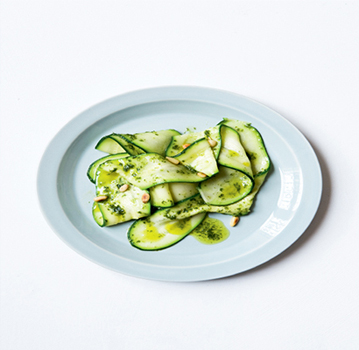
SERVES 4
PREPARATION: 10 MINUTES
COOKING TIME: 30 MINUTES
30 g (1 oz) pine nuts, 3 courgettes (zucchini), 1 small bunch basil, 2 garlic cloves,1 tablespoon white wine vinegar, 100 ml (3 fl oz) olive oil, 30 g (1 oz) gratedParmesan, salt and pepper
Toast the pine nuts in a dry frying pan (skillet). Wash the courgettes and basil.
Blend the garlic, basil, half the pine nuts, the vinegar, oil and Parmesan. Seasonwith salt and pepper.
Cut the courgette into ribbons using a mandoline. Put them into a colander orsieve and plunge them into boiling water for 30 seconds. The should be al dente.
Drain the courgettes, lay them on a plate, pour over the pesto and serve sprinkledwith the remaining pine nuts.
COURGETTE, FETA AND MINT FRITTATA

